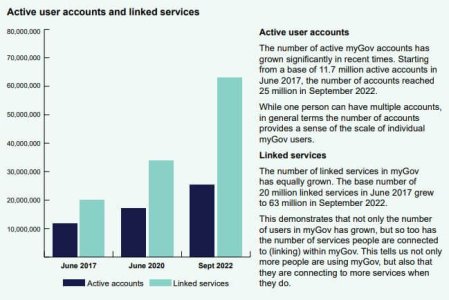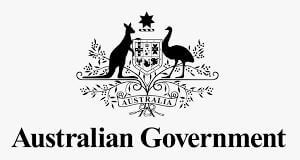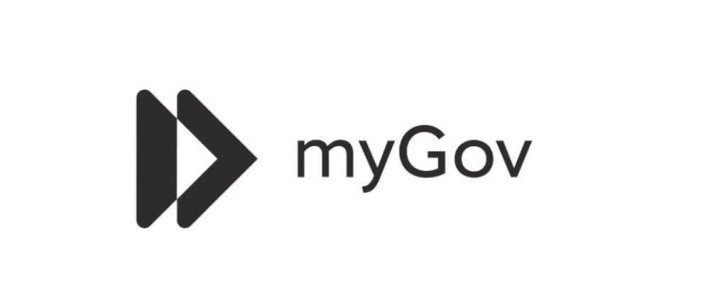myGov is getting a massive upgrade – find out which services are changing
- Replies 11
As technology becomes a larger part of our everyday lives, it’s getting harder to imagine a day without having access to the internet.
Even if some of us don’t use online banking and or make online purchases, our need to download information and access important documents online has made the internet an essential tool in our day-to-day activities.
Considering this, the federal government has now flagged significant changes to the myGov platform, recognising it is now a 'critical national infrastructure' like roads, hospitals, and power grids.
One of Australia’s most widely used government platforms, myGov is used by more than 25 million people, and that number has doubled in the last five years. It is believed that over 1.4 million people use the service every day.
Unfortunately, the platform’s popularity hasn’t meant a good user experience. In a survey, it was revealed that less than half of users are satisfied with how it works. It was also shared that 75 per cent of those who participated in the survey said the government needed to improve its online services.
Complaints about scammers have resulted in lower customer satisfaction as well.
In December last year, it was reported that cybercriminals were using fake myGov profiles to hack into people’s ATO accounts. One woman fell victim to the scam; she shared that someone set up a fake ATO account by somehow accessing her existing one, impersonating her, and filing five refunds that amounted to $25,000. You can read more details about this story here.
In January this year, there were reports that an online phishing scam had returned to Australia. Cybersecurity firm MailGuard warned myGov users that the cyber scheme sends emails to people with the subject line: ‘You have an outstanding refund from myGov’.
This is an attempt to steal personal information and a ploy to prey upon vulnerable Aussies who are currently facing financial difficulties. More details on this scheme, and how to protect yourself, can be read here.
In reviewing the service, it was recommended that a significant and ongoing increase in funding for the platform and new legislation will reflect its importance as a link between the government and Australians.
It was also reported that providing high-quality digital services will deliver savings for the government by streamlining certain processes. To that end, new features for the mobile app were also suggested, including working with state governments to incorporate identity documents such as driver’s licence.
Acknowledging this issue, Government Services Minister Bill Shorten has promised an overhaul of the platform to ensure it keeps up with user expectations.
‘The myGov software and the app, and the program, really need to keep up with the expectations of Australians…It has the potential to be a long-term part of how Australians deal with the government,’ he explained.
Former Telstra Chief Executive David Thodey stated that the sheer volume of people now relying on myGov meant the government cannot afford to provide a ‘substandard service’.
‘MyGov, or delivering government services digitally, has no longer become optional,’ he said.
So, what’s going to change?
Well, according to reports, several possible options on how to improve myGov’s services are on the table for review.
It points to the NSW government’s online offerings, particularly the Service NSW digital platforms, as the ‘best practice’ within the country.
But the main goal suggested here is that the federal government should be working with the states to try and bring more services together, so people can access what they need from different levels of government in one place.
However, it is understood that this move to digitise everything might be difficult for people who are visually-impaired, or for senior citizens who might find the app hard to navigate.
In the review, the government acknowledges that there may be gaps in accessibility and enhancing user experience, as the app may not be easy to understand for priority groups such as older adults.
But the review provided an action plan that included digital literacy resources for senior Australians, including videos on how to use the myGov app, to assist them in becoming more confident while using the platform.
For those with disabilities, the federal government intends on designing the system with this ‘priority group of users in mind’. However, it is unclear how the design will be implemented or what the design will be as it was not stated in the review, which you can find in full here.
Disaster response, registering births and deaths, and providing access to documents such as driver’s licences, senior cards, occupational licences, and Medicare cards have all been listed as priorities.
Minister Shorten said a timeline for achieving these goals was not easy, but he would still ‘like to see it done’.
‘This [report] is the blueprint, and what we want to do — what I would like to do — over the next 12 months is articulate a calendar where we can start dropping cards in. We're hoping to put the Medicare card on the app in March,’ he explained.
Of course, this change will cost money to implement. The former government increased myGov’s funding by $100 million a year for two years, but that arrangement will expire this year.
It was also suggested that funding increases be made permanent, giving myGov a budget of roughly $138 million every year going forward.
Minister Shorten acknowledged that a decision must be made as part of the May budget, but also recognised that changes to the app will be hard to implement without additional money.
‘The fact of the matter is the funding just falls off a cliff. There are still going to be computers and apps here on July 1, 2023. So, of course, we have to deal with it, but we have to wait for the budget to deal with it,’ he said.

What about you, members? Are there any other changes you think could help make the MyGov experience better? Share your views and tips in the comments below!
Even if some of us don’t use online banking and or make online purchases, our need to download information and access important documents online has made the internet an essential tool in our day-to-day activities.
Considering this, the federal government has now flagged significant changes to the myGov platform, recognising it is now a 'critical national infrastructure' like roads, hospitals, and power grids.
One of Australia’s most widely used government platforms, myGov is used by more than 25 million people, and that number has doubled in the last five years. It is believed that over 1.4 million people use the service every day.
Unfortunately, the platform’s popularity hasn’t meant a good user experience. In a survey, it was revealed that less than half of users are satisfied with how it works. It was also shared that 75 per cent of those who participated in the survey said the government needed to improve its online services.
Complaints about scammers have resulted in lower customer satisfaction as well.
In December last year, it was reported that cybercriminals were using fake myGov profiles to hack into people’s ATO accounts. One woman fell victim to the scam; she shared that someone set up a fake ATO account by somehow accessing her existing one, impersonating her, and filing five refunds that amounted to $25,000. You can read more details about this story here.
In January this year, there were reports that an online phishing scam had returned to Australia. Cybersecurity firm MailGuard warned myGov users that the cyber scheme sends emails to people with the subject line: ‘You have an outstanding refund from myGov’.
This is an attempt to steal personal information and a ploy to prey upon vulnerable Aussies who are currently facing financial difficulties. More details on this scheme, and how to protect yourself, can be read here.
In reviewing the service, it was recommended that a significant and ongoing increase in funding for the platform and new legislation will reflect its importance as a link between the government and Australians.
It was also reported that providing high-quality digital services will deliver savings for the government by streamlining certain processes. To that end, new features for the mobile app were also suggested, including working with state governments to incorporate identity documents such as driver’s licence.
Acknowledging this issue, Government Services Minister Bill Shorten has promised an overhaul of the platform to ensure it keeps up with user expectations.
‘The myGov software and the app, and the program, really need to keep up with the expectations of Australians…It has the potential to be a long-term part of how Australians deal with the government,’ he explained.
Former Telstra Chief Executive David Thodey stated that the sheer volume of people now relying on myGov meant the government cannot afford to provide a ‘substandard service’.
‘MyGov, or delivering government services digitally, has no longer become optional,’ he said.
So, what’s going to change?
Well, according to reports, several possible options on how to improve myGov’s services are on the table for review.
It points to the NSW government’s online offerings, particularly the Service NSW digital platforms, as the ‘best practice’ within the country.
But the main goal suggested here is that the federal government should be working with the states to try and bring more services together, so people can access what they need from different levels of government in one place.
However, it is understood that this move to digitise everything might be difficult for people who are visually-impaired, or for senior citizens who might find the app hard to navigate.
In the review, the government acknowledges that there may be gaps in accessibility and enhancing user experience, as the app may not be easy to understand for priority groups such as older adults.
But the review provided an action plan that included digital literacy resources for senior Australians, including videos on how to use the myGov app, to assist them in becoming more confident while using the platform.
For those with disabilities, the federal government intends on designing the system with this ‘priority group of users in mind’. However, it is unclear how the design will be implemented or what the design will be as it was not stated in the review, which you can find in full here.
Disaster response, registering births and deaths, and providing access to documents such as driver’s licences, senior cards, occupational licences, and Medicare cards have all been listed as priorities.
Minister Shorten said a timeline for achieving these goals was not easy, but he would still ‘like to see it done’.
‘This [report] is the blueprint, and what we want to do — what I would like to do — over the next 12 months is articulate a calendar where we can start dropping cards in. We're hoping to put the Medicare card on the app in March,’ he explained.
Of course, this change will cost money to implement. The former government increased myGov’s funding by $100 million a year for two years, but that arrangement will expire this year.
It was also suggested that funding increases be made permanent, giving myGov a budget of roughly $138 million every year going forward.
Minister Shorten acknowledged that a decision must be made as part of the May budget, but also recognised that changes to the app will be hard to implement without additional money.
‘The fact of the matter is the funding just falls off a cliff. There are still going to be computers and apps here on July 1, 2023. So, of course, we have to deal with it, but we have to wait for the budget to deal with it,’ he said.
Key Takeaways
- The federal government has flagged significant changes to its myGov platform, recognising the service is now ‘critical national infrastructure’ like roads, hospitals or the power grid.
- The number of people using myGov has soared in recent years, driving demand for a range of government services.
- Government Services Minister Bill Shorten said high-quality digital services will also deliver savings for the government and new features for the mobile app were suggested, including working with state governments to incorporate identity documents, like driver’s licences.
- The report suggests making the increased funding for myGov permanent, giving the service a budget of roughly $138 million every year going forward.










